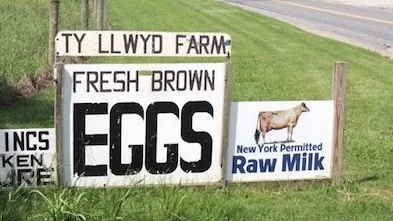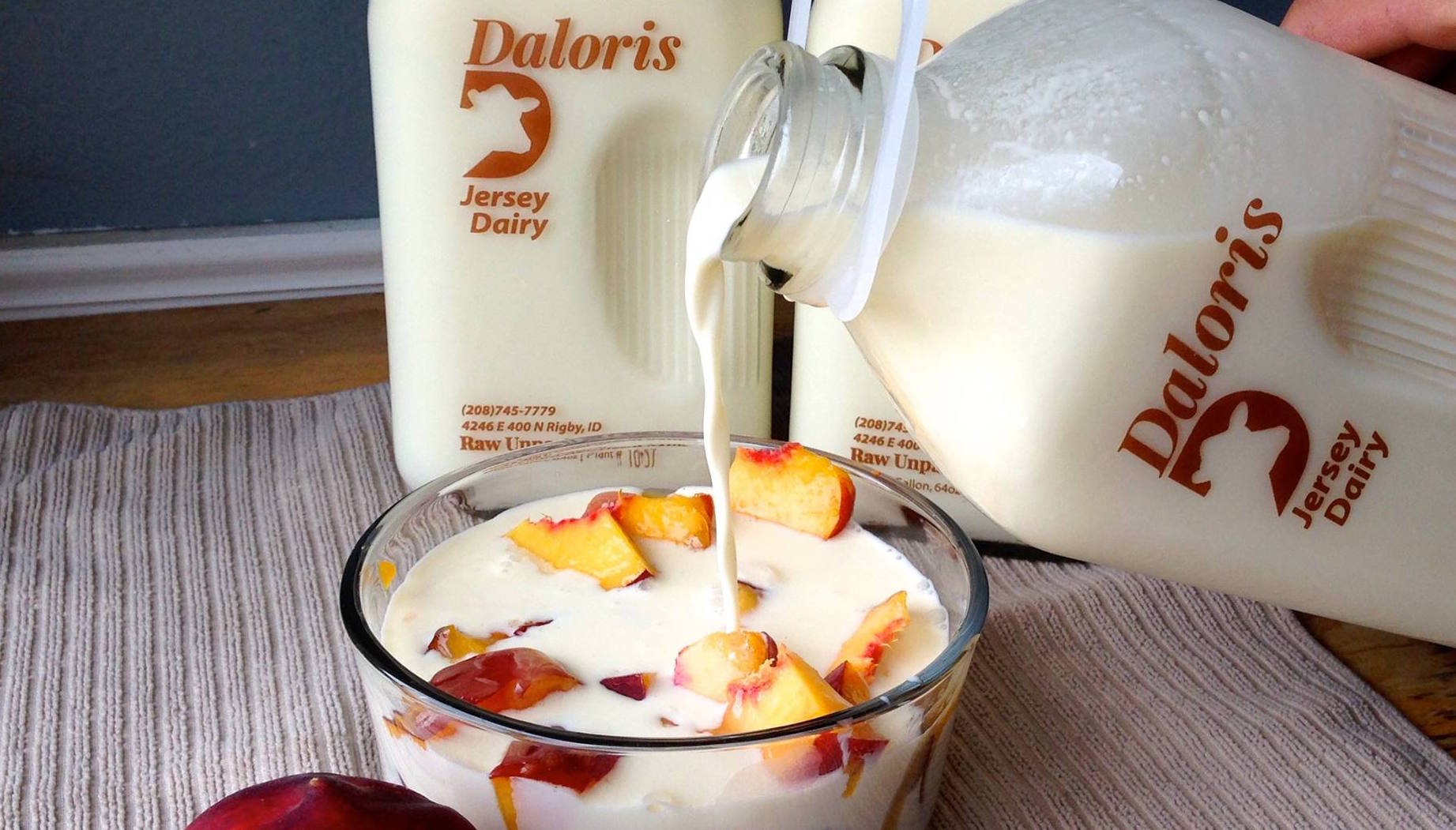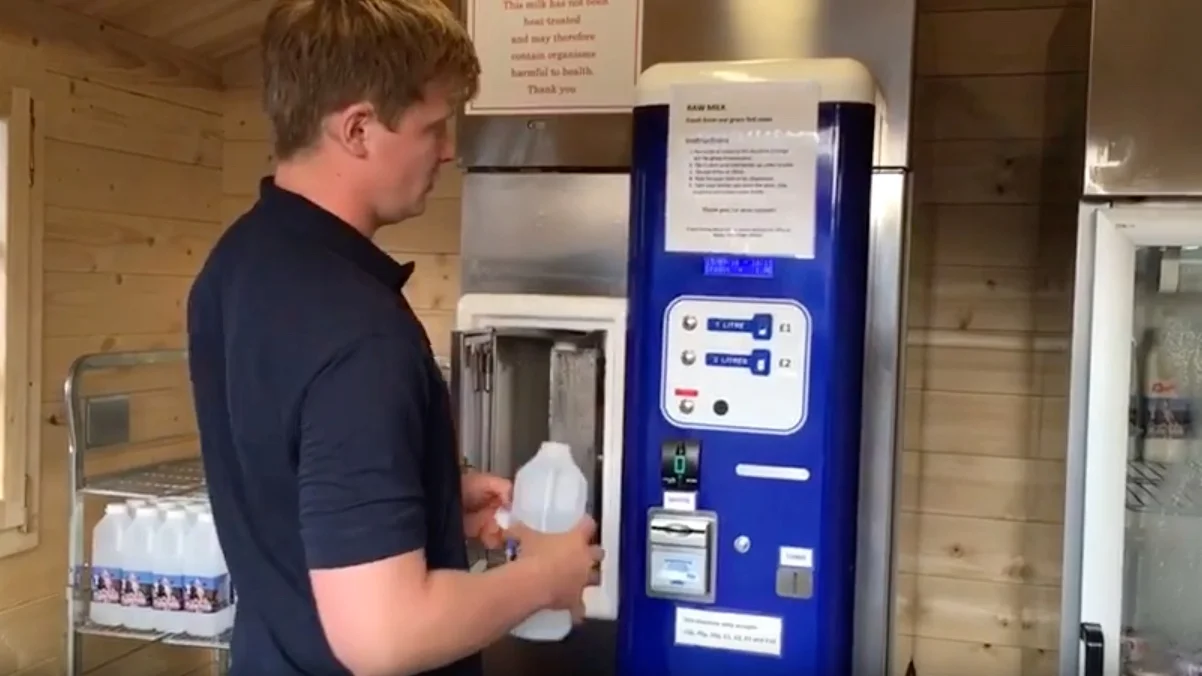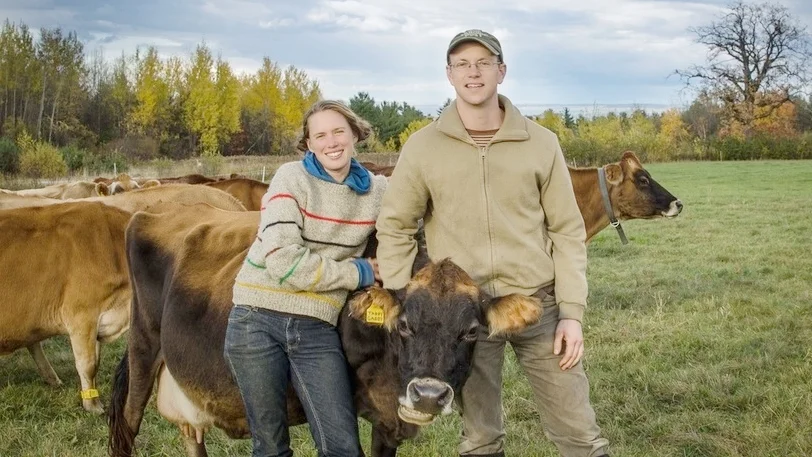Raw Milk around the world
this is an excerpt from the Briefing Pack v2:
In many countries raw milk and products made from it have been part of the food culture for centuries. Other countries are slowly developing carefully regulated raw milk industries. In the United States about 10 million people legally buy and consume raw milk. There have been no major illness outbreaks and no deaths from milk produced expressly for the certified raw milk market.
Certified raw milk in the United States: Organic Pastures Dairy Company
In California, 625 stores carry state-inspected, intensively tested, certified raw milk. It is a thriving market. Individuals and families experience immune system recovery from all sorts of gut-based and immune illnesses. Much can be learned about safe, regulated, profitable raw milk production from the Organic Pastures Dairy Company (OPDC), and the Raw Milk Institute. OPDC is an internationally recognised pioneer in raw milk food safety. The following descriptions are taken from the OPDC website.
We are certified Grade A and inspected by California Department of Food and Agriculture. Grade A is the highest standard for milk in California. We have to pass the bacteria and pathogen standards that are meant for pasteurized milk, without pasteurizing. The coliform standard is 10, standard plate count is 15,000 and pathogen standard is ‘Not Detected’ in all products all the time. There are also rigorous quarterly inspections where our facilities and equipment are inspected to ensure it is up to Grade A requirements and code. We have a great working relationship with our California inspectors and they hold us to a high standard that we are proud to achieve.
Photo: Organic Pastures raw milk
History of the OPDC Food Safety Program
Raw milk is naturally designed to be an extremely safe, nutritious, complete food. It is up to the dairyman (sic) and creamery team to maintain its natural and inherent quality.
In 2007, OPDC collaborated with top researchers worldwide including Dr Ron Hull of Australia, Dr Caterina Berge UC Davis, and Dr Ted Beals MD of Michigan to develop the beginnings of our current Food Safety Program (RAMP, Risk Analysis and Management Plan). Our RAMP is a ‘Grass to Glass’ comprehensive conditions- and risk-based management system that assures consistent test outcomes through audited daily checklist verification of all non-critical, GMP, SSOP and CCP raw milk safety elements. This management tool allows for regular team meetings and discussions to make any necessary changes to the plan as we learn more about safety issues and assess data. We extensively test our milk and our milk filters to provide valuable information about our products to assure they are pathogen free.
Our milk testing program
As part of our food safety plan, we use a local state-approved lab to test our milk. We test daily for the presence of coliforms and standard plate count. The coliform bacteria count is used as an index of the level of sanitation employed in the handling and processing of milk products. The standard plate count has long been the primary test for determining the bacterial density (quality) of fresh raw or pasteurized grade A milk. We also test for pathogens weekly. In addition, local state regulatory agencies test our milk for pathogens, standard plate count, and coliforms once a month.
The company goes on to describe how it deals with animal health, by quarantining cows that appear unwell, and applying a range of natural remedies.
Photo: Some of the 10 million drinkers of raw milk in the United States visit Organic Pastures Dairy Company.
Across the USA:
- retail sales are legal in 12 states for raw milk
- on-farm sales are legal in 15 states
- herdshares are legal in 4 states
- there is no law on herdshare in 6 states
- milk sales as 'pet food' are legal in 4 states (implying that human consumption is feasible).
Thus, raw milk may be bought, or obtained through herdshares, in 43 out of 50 states.
Video: Aaron McAfee (COO), shares about Organic Pastures and our processes.
Video: Spend six minutes and learn about the importance of fresh, unpasteurized milk and what the Raw Milk Institute plans to accomplish.
Certified raw milk in the UK
In England and Wales, raw milk is sold direct by farmers from their farm shops and at farmers’ markets, but also by distributors if the sale is direct with the farmer, such as sales over the internet (with overnight courier). There are no restrictions on raw cream, butter and other dairy. Farms selling milk must be registered with the Food Standards Agency. In England some 200 producers are registered to sell certified raw milk.
The British Royal family has consumed raw milk for hundreds of years. Prince Charles has been quoted as saying that his grandmother lived to her 100th year thanks in part to her habit of drinking raw milk.
The Dairy Products Hygiene Regulations of 1995 state of raw milk:
an occupier of a registered production holding may sell such milk at or from the farm premises where the animals from which the milk has been obtained are maintained, to: (a) the ultimate consumer for consumption other than at those farm premises; (b) a temporary guest or visitor to those farm premises as or as part of a meal or refreshment; or (c) a distributor.
A distributor may sell such milk: (a) in the containers in which he receives the milk with the fastenings of the containers unbroken; (b) from a vehicle which is lawfully used as shop premises; and (c) direct to the ultimate consumer.
Hook & Son—leading UK producer
Phil and Steve Hook produce certified raw milk and other dairy products in East Sussex. Phil has been on the farm all his life, establishing the herd in 1959 and gaining tenancy in 1972. Phil’s eldest son Steve joined the partnership in 1991. Phil and Steve sell milk on two local milk rounds, at farmers markets in London, including Borough Market, in addition to offering a pioneering nationwide delivery service. Here is how Hook & Son describe their quality control and safety procedures on their website:
To have a licence to sell raw milk we meet the standard three monthly laboratory tests that the Food Standards Agency run on our raw milk. These tests are purely for the total viable bacteria count (TVC) of the sampled milk and a 'coliform' test that detects how clean your milk is. In addition to this we pay to have a sample of our raw milk, raw cream and raw butter tested every week at a laboratory for TVCs, coliforms, presence of pathogens and other cleanliness checks. The cost of these tests does mean that our milk overheads are higher but we feel that it is important to have a weekly analysis of our produce to ensure that we are sending only the best quality products to you.
Photo: Steve (left) and Phil Hook are among 200 licensed producers of certified raw milk in England. Foil-capped 'green top' bottles are familiar to raw milk drinkers across the country.
We run our business in accordance with our HACCP (Hazard Analysis Critical Control Point) which is a personalised, systematic preventative approach to food safety that has been drawn up with feedback from our local Environmental Health officers. Our HACCP system is used at all stages of the food chain, from milking the cows, preparation processes, cleaning and checks made along the way, right up to packaging and distribution. All of our staff who either milk the cows, bottle the milk, make cream or make butter are trained in food safety and hygiene to level 2 standard. This is not a requirement but something that we have chosen to do and evidences how serious we are about producing a good, clean product for our customers.
Our products are taste tested to understand how the flavours alter as the diet of the cows changes through the seasons. Our cows are tested for tuberculosis annually and we have not failed this test to date.
Video: The Moo Man www.moomanmovie.com
The Moo Man is a documentary about British raw milk producer Steve Hook and his relationship with his herd of cows
Certified raw milk in New Zealand
New Zealanders buy certified raw milk direct from dairy farms, some of which operate vending/dispensing machines. For example, dairy company Village Milk on New Zealand’s South Island sells up to 300 litres of raw milk a day from its on-farm vending machines, with a rigorous focus on safety, including extensive testing under a risk management plan. In four years of operation there have been no health problems among customers. Currently, New Zealanders are allowed to buy up to five litres of raw milk a day at a cost of $NZ2.50 per litre.
Wider distribution and a revised regulatory framework were reviewed recently, with a focus on testing, quality thresholds, monitoring processes, public education, and secure and safe delivery of milk. As a result, new arrangements for certified raw milk were announced by the New Zealand government in June 2015, coming into effect in March 2016. Importantly, home deliveries will be allowed for the first time, in addition to the established farm pickup system. New registration and milk testing provisions will apply to raw milk producers. People who make cheese for their families will be able to buy as much raw milk as they want, and sales limits on farmers will be lifted.
Photo: A grandmother helping the kids get raw milk from the vending machine
Here is the viewpoint of the Raw Drinking Milk Producers Association of New Zealand:
The test results our producers (and others around the world) are achieving are better than other ready-to-eat food. Systems have evolved to such a point that producers in NZ and overseas are achieving exceptional results, equal to or better than any processed milk. Emerging technology will allow easier and more regular testing at affordable prices, giving producers and consumers confidence that raw drinking milk is at least as safe as other food groups.
Raw milk is a food. As such it no longer needs exemption from the current laws in this country. But it does not deserve to be singled out either, and we suggest it should get the same treatment as all other fresh perishable food. We also ask that a clear distinction be recognised between raw drinking milk, and raw milk produced for factory supply for further processing. This distinction needs to flow right through from the regulatory process, all the way to the reporting processes, so that in the future any raw milk illness reported recognises the difference. The Association is very interested in being constructive in developing solutions to enable easy access to safe raw drinking milk for all New Zealanders who want it.
Video: Village Milk appearing on Rural Delivery NZ

































